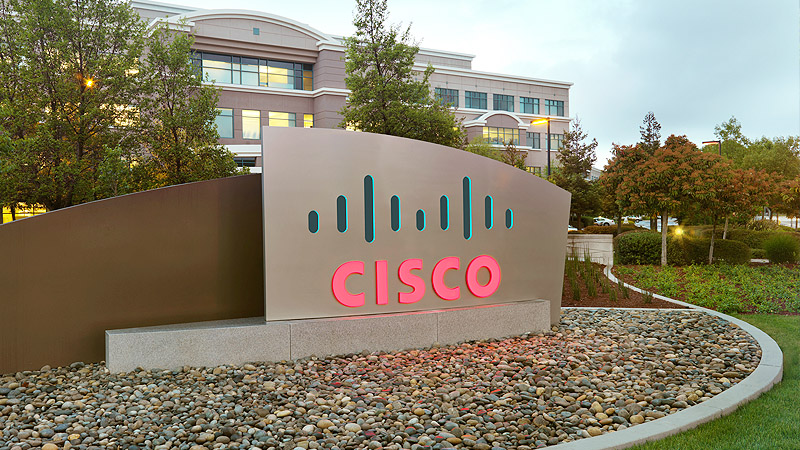Cisco, SAN JOSE, California — November 16, 2015: Eighty-six percent of manufacturers view the transition from product-centric to service-oriented revenue models as a core part of their growth strategies. However, only 29 percent believe that services will grow faster than the product aspect of their business.
A new Cisco study of 625 senior manufacturing decision makers across 13 countries highlighted this disconnect between the size of the service opportunity and how much is being captured – or what Cisco calls the Service Dilemma.
Good Products Are No Longer Enough
Today, simply making a good product is insufficient; what happens after the product is sold is becoming increasingly important. Industrial machine builders that successfully leverage services, for example, are using them to drive disruptive new business models. This enables them to charge for business outcomes — such as plant uptime — just as they now charge for physical products sold as a capital investment. Companies that don’t harness services for such recurring revenue will risk falling behind in this new dynamic marketplace.
Cisco’s survey respondents recognize this threat. Seventy-nine percent believe that digital disruption will have a significant impact on their companies over the next three years. However, many manufacturers are either struggling with the transition to services or are not moving fast enough.
Accelerate the Digital Agenda to Drive Value
The solution to the service dilemma requires digital business transformation. Cisco defines this as an organizational change through new business models and the use of digital technologies to improve performance. It enables greater insight and increased agility.
Manufacturers cited digital technologies such as cloud (37 percent), Internet of Things (33 percent), and analytics (32 percent) as having the greatest impact on production over the next three years. This is notable in part because of what respondents did not emphasize: “manufacturing” technologies such as robotics, 3D printing, and so forth. It underscores the pivotal role of digitization for the industry’s evolution, especially as connecting across an entire manufacturing ecosystem becomes critical.
According to Cisco’s economic analysis, the payoff for an average $20 billion manufacturing firm that digitizes is a profit upside of 12.8 percent over the next three years, or 19 percent over 10 years.
A ‘Two-Front War’: Selling Products and Services Simultaneously
To capture that value, manufacturing executives need to move from short-term thinking towards long-term planning for the future. Their ability to gain significant value hinges on accelerating the transition to a services model. Economic research by Cisco Consulting Services reveals $383 billion in Digital Value at Stake coming from connected products, connected machines, and new service models alone. Manufacturers are currently leaving 76 percent of the overall industry Value at Stake on the table.
Venturing into this unfamiliar ecosystem can create daunting challenges. Based on the research, the number one concern is the complexity that results from selling products and services simultaneously (23 percent), along with achieving profitability in new lines of business (18 percent), and finding ways to monetize customer data (15 percent).
Where Service and Digital Journeys Converge, Value Is Found
Cisco’s survey further explored one particularly mature manufacturing use case: Connected Machines. It found that 33 percent of industrial machine builders were already receiving telemetry from customers’ plant environments, and another 56 percent were planning to do so. Only six percent of machine builders have no such plans. The machine-as-a-service model for connected plant-floor equipment is seen as highly positive for machine builders. Forty-eight percent consider themselves ‘very interested’ in such an arrangement, another 36 percent ‘fairly interested,’ while four percent indicated they are already experimenting with this new consumption approach.
Digital transformation must start with top-down leadership, with changes spanning people, process, and technology. With the right foundational capabilities in place, manufacturers will have greater business agility to leapfrog competitors, derive insights that will create organizational efficiencies and reduce silos, and build a new customer, partner, and organizational experience for the digital age.
Thought Leader Quotes
“When you look at digitization, if we can fully leverage the benefits of digitization and IoT, all the way from core manufacturing out to that end-user experience, the opportunities are exponential because we can better use all of those services, all of that data.”
-- TONY BOLTON: CIO, Global Telecommunications, General Motors
“Leading manufacturers are laying the foundation for realizing value from the Internet of Things by bringing together information technology (IT) and operational technology (OT). Tighter integration between industrial assets and the rest of the enterprise can drive business value, strengthen competitive positions and prepare their operations for future productivity improvements.”
-- JOE KANN: VP, Global Business Development, Rockwell Automation
“One challenge is on the technology side, making sure that the right infrastructure is provided. The second challenge I would see is more on the organizational level, to make sure that you somehow help your organization move towards these new business models.”
-- DIRK SLAMA: Director, Business of Development, Bosch Software Innovations
“We can give feedback to customers proactively: how to save energy in terms of the operations of their machines, how to make the machine last longer, how to reduce cycle time, so it gives us a whole new set of business opportunities that we can offer to customers to really improve their performance and our ability to support them as a customer.”
-- RICK SCHNEIDER: CEO, FANUC America
Supporting Resources
The Digital Manufacturer: Resolving the Service Dilemma
Manufacturing Thought Leadership
Video: The Digital Manufacturer
Digital Solutions for Industries & IoT System Security Launch Press Release
###
Cisco
Cisco (NASDAQ: CSCO) is the worldwide leader in IT that helps companies seize the opportunities of tomorrow by proving that amazing things can happen when you connect the previously unconnected. For ongoing news, please go to http://thenetwork.cisco.com.



